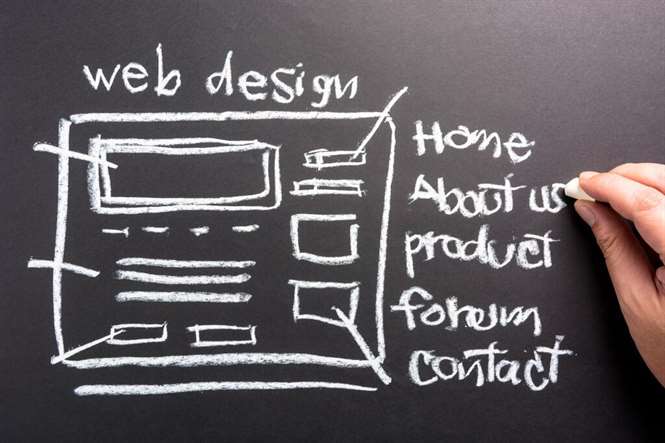Содержание
Many long-standing teams go through these cycles many times as they react to changing circumstances. For example, a change in leadership may cause the team to revert to storming as the new people challenge the existing norms and dynamics of the team. For teams that reached the performing stage, it’s likely that the team members will stay in touch with each other and may even seek out opportunities to work together in the future. The focus shifts to the individual experience at this stage since team members may be feeling sad or even despondent as the group breaks up. Adjourning is sometimes known as the mourning phase because individuals feel a deep bereavement once the experience is over.

Generally, everyone wants to be liked and accepted by the other group members. People play nicely with each other in the forming stage and try to make a good first impression. This is the point where the project comes to an end and the team separates and goes their separate ways. Some team members may find this hard because they liked the routine of the group, have made close friendships or if the future, after leaving this team, looks bleak and unpromising. The co-creation stage, when the focus shifts towards developing group outputs. Thus, the researchers study about the group development to determine the changes that occur within the group.
Seasoned leaders will be ready for this, and will help the group get back to Performing as quickly as possible. Though Tuckman presented the different phases as a linear model, it is important to realize that in practice, the phases are rather fluid and group formation is not always a linear process. Which means, you may experience these stages in sequential order, or find yourself in a loop with one or more of the stages outlined above. How they trust each other to remain accountable for their tasks without dropping the ball. Not only are you proud of the team development they’ve exemplified, but you’re also proud of their individual capacity to stay in integrity with the quality of their work. This is a concept that psychologist Bruce Tuckman came up with to properly understand the progress of various teams and the development of key contributors.
Check Your Understanding
The members may share common jokes about the organization for which they work; there may be long silences and uncomfortable pauses. Team members start to resolve their differences, appreciate colleagues’ strengths, and respect the leader’s authority. Behaviour from the storming and norming phases can overlap for some time when new tasks come up.
In agile software development, high-performance teams will exhibit a swarm behavior as they come together, collaborate, and focus on solving a single problem. Swarming is a sometime behavior, in contrast to mob programming, which can be thought of as swarming all the time. As you learn about their progress, you ask them questions about their processes and notice how they collaboratively provide constructive answers.
- Rickards and Moger proposed a similar extension to the Tuckman model when a group breaks out of its norms, through a process of creative problem-solving.
- They feel confident and comfortable when approaching you with concerns and questions.
- If this team was comprised of too many plants in its storming stages, these people could be completing for their idea to be heard.
- So, you’ve hired new employees or put together a well-rounded team to work on a particular project.
- For this reason, motivation is usually high and team members have confidence in their ability to attain goals.
- At the beginning, anxiety is high, people are uncertain and they are overly polite and pleasant.
At this point, performance increase as the team begins to cooperate and focus on the goals. Not all groups reach this stage, characterised by a state of interdependence and flexibility. Everyone knows each other well enough to be able to work together, and trusts each other enough to allow independent activity. Roles and responsibilities change according to need in an almost seamless way. Group identity, loyalty and morale are all high, and everyone is equally task-orientated and people-orientated.
Four Stages Of Team Development
Team members start to open up to each other and confront one another’s ideas and perspectives. This way, you can prepare for conversations that build trust while supporting your team and leading through each team development stage. Identifying each of the 4 stages of team development helps you underscore your team’s needs during each one. In this stage typically team members are ready to leave causing significant change to the team structure, membership, or purpose and the team during the last week of class. While the group continues to perform productively they also need time to manage their feelings of termination and transition.

This is the second stage of team development, where the group starts to sort itself out and gain each others’ trust. This stage often starts when they voice their opinions; conflict may arise between team members as power and status are assigned. At this stage there is often a positive and polite atmosphere, people are pleasant to each other, and they may have feelings of excitement, eagerness and positiveness.
Scenario: Youre Leading Your Team Through The Norming Stage
Trust builds, productivity rises and the team begins working together toward the common goal. At this point, the leader should draw out the opinions of all members and leverage the diversity of the team. As conflicts arise, the leader must take quick action to deal with the issue and maintain the positive climate. The team members are now competent, autonomous and able to handle the decision-making process without supervision. Dissent is expected and allowed as long as it is channelled through means acceptable to the team.
Your team is new and excited to learn about upcoming projects as well as about each other. You outline the work, as well as key milestones, deliverables and objectives. As a result, you’ll establish yourself as a leader of a team rooted in transparency and trust while you communicate clear expectations and team principles.

The leader of the team will then describe the tasks to the group, describe the different behaviours to the group and how to deal and handle complaints. In Tuckman’s 1965 paper, only 50% of the studies identified a stage of intragroup conflict, and some of the remaining studies jumped directly from stage 1 to stage 3. Some groups may avoid the phase altogether, but for those who do not, the duration, intensity and destructiveness of the “storms” can be varied. Tolerance of each team member and their differences should be emphasized; without tolerance and patience the team will fail. This phase can become destructive to the team and will lower motivation if allowed to get out of control.
Team members look to a group leader for direction and guidance, usually CORAL project guides. With the groundwork laid and the wrinkles ironed out, the team can now function at a very high level. The group is productive and efficient, and the team members support and rely on each other to achieve the group’s objectives https://globalcloudteam.com/ in the best way possible. Business leaders want their teams to operate in the performing stage for as long as possible. As the team moves into the norming stage, a group identity emerges. The team has developed a clear set of roles and responsibilities, open lines of communication and its own rules for coexistence.
Stage Five: Adjourning
Team confidence makes team roles more fluid and more tasks can be delegated by the facilitator. In the performing stage, you’ll notice fluidity with communication and overall conversations. This is demonstrated through high morale, productivity and engagement.
Depending on the culture of the organisation and individuals, the conflict will be more or less suppressed, but it’ll be there, under the surface. To deal with the conflict, individuals may feel they are winning or losing battles, and will look for structural clarity and rules to prevent the conflict persisting. Successfully moving through the storming stage means that a team has clarified its purpose and strategy for achieving its goals.
Stages Of Group Process & Development
Ultimately, the goal is to make sure you can provide psychological safety as a baseline, evaluate team patterns of behaviour and notice when you’re in a negative cycle. Here’s the thing, the line between certain stages can get blurred since team members evolve at different times. This way, they’ll remain high-performing while re-establishing trusted connections. You book 1-on-1 meetings with team members to learn about each of their experiences. As you do this, you recognize clear and consistent points with each team member and the benefits of hosting a team retrospective. While originally things had been going according to plan, roadblocks crop up during this stage.
When your team has grown through the stages of team development they establish a state of “flow”. This means they understand how to work together in a cohesive way that helps them reach their goals. This is where it’s important to level with individual contributors and truly get to know what’s going on. This is a great time to reflect on what makes a high-performing team able to accomplish tasks and move through obstacles. The initial forming stage is the process of putting the structure of the team together. Team members feel ambiguous and conflict is avoided at all costs due to the need to be accepted into the group.
Adjourning
It now transitions to a period focused on developing shared values about how team members will work together. Norms become a way of simplifying choices and facilitating collaboration, since members have shared expectations about how work will get done. Supervisors of the team during this phase are almost always participating. Even the most high-performing teams will revert to earlier stages in certain circumstances.
When your team learns more context about what’s required of them in this stage, they’ll feel more confident. Remote teams A simple platform that tells you how remote teams really feel, and fosters action-oriented 1-on-1 conversations. Discover all templates Made to solve challenges quickly and build stronger relationships with your team. Alignment Get your people in the same mindset with OKR goals and 1-on-1 meetings.
In this stage, all team members take responsibility and have the ambition to work for the success of the team’s goals. They start tolerating the whims and fancies of the other team members. The danger here is that members may be so focused on preventing conflict that they are reluctant to share controversial ideas. As all stages have their own focus, they also correspond to a different set of feelings, behaviours and group tasks. According to Tuckman, raising awareness about the different stages and why things are happening in certain ways could positively influence the team’s process and productivity. Performing is the stage of team development when team members have productive relationships and are able to communicate and coordinate effectively and efficiently.
When that time comes it might help you to know that all teams go through a series of sequential stages as they grow towards sustained levels of high performance and synergy. This is the perfect team development stage to learn about how your team overcomes obstacles and bonds through shared experiences. The group members know each other better, and sympathies and personality clashes have emerged.
The second stage – storming – may be eased into or may hit like a storm. The storming phase is where the group lets it defenses down and begins sharing. Ideas and feelings may be contradictory, feel accusatory in nature, and illicit strong counter-responses. In order to tackle a problem, it must be revealed in all of its ugly glory and viewed from the many angles and perceptions of those in the room. The best personality tests & tools for teams at work In this article we explore the best 10 and most popular personality tests and tools for teams that want to be more effective and happier.
Answer the question below to see how well you understand the topics covered in this section. This short quiz does not count toward your grade in the class, and you can retake it an unlimited number of times. Teams move through a series of four phases—from when they are formed to when their work is complete. When this happens, it’s important to take stock of what your team needs. This gives them an opportunity to recognize their abilities as well as those of their teammates. Your team asks questions formulated in ways that are rooted in emotional intelligent practices.
They feel confident and comfortable when approaching you with concerns and questions. After the storming stage, they recognize behavioural patterns, 4 stages of role development strengths and develop foresight for upcoming roadblocks. You approach your team to learn about their bottlenecks, roadblocks and concerns.
For this reason, motivation is usually high and team members have confidence in their ability to attain goals. Alasdair A. K. White together with his colleague, John Fairhurst, examined Tuckman’s development sequence when developing the White-Fairhurst TPR model. They simplify the sequence and group the forming-storming-norming stages together as the “transforming” phase, which they equate with the initial performance level. This is then followed by a “performing” phase that leads to a new performance level which they call the “reforming” phase.
In the context of group process and practice, adjourning occurs when the project ends and the team is dissolved. The members may meet for a final celebration to mark the success of the project. Ultimately, though, the team members will be moving on to different teams and projects. They’re looking for closure before they all go their separate ways.